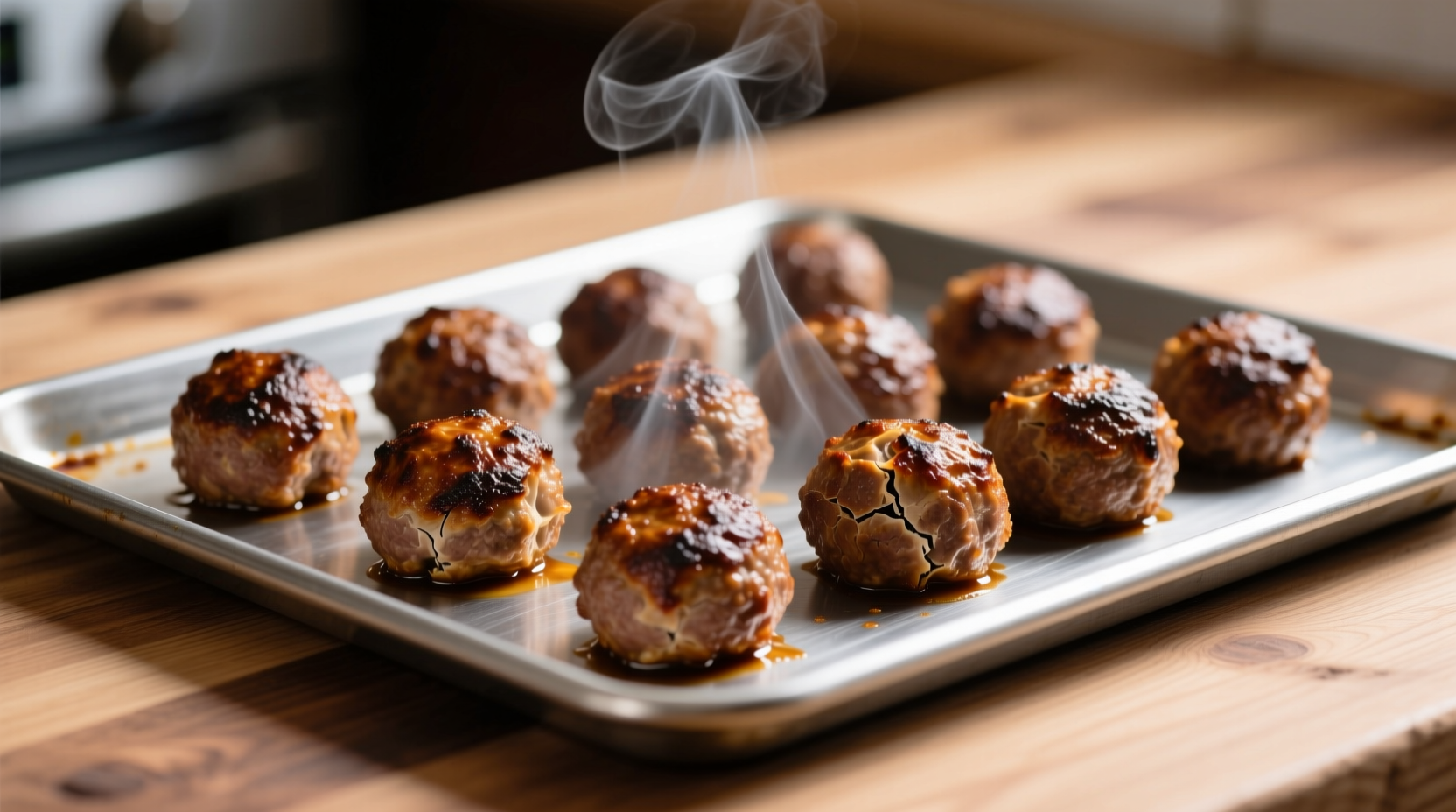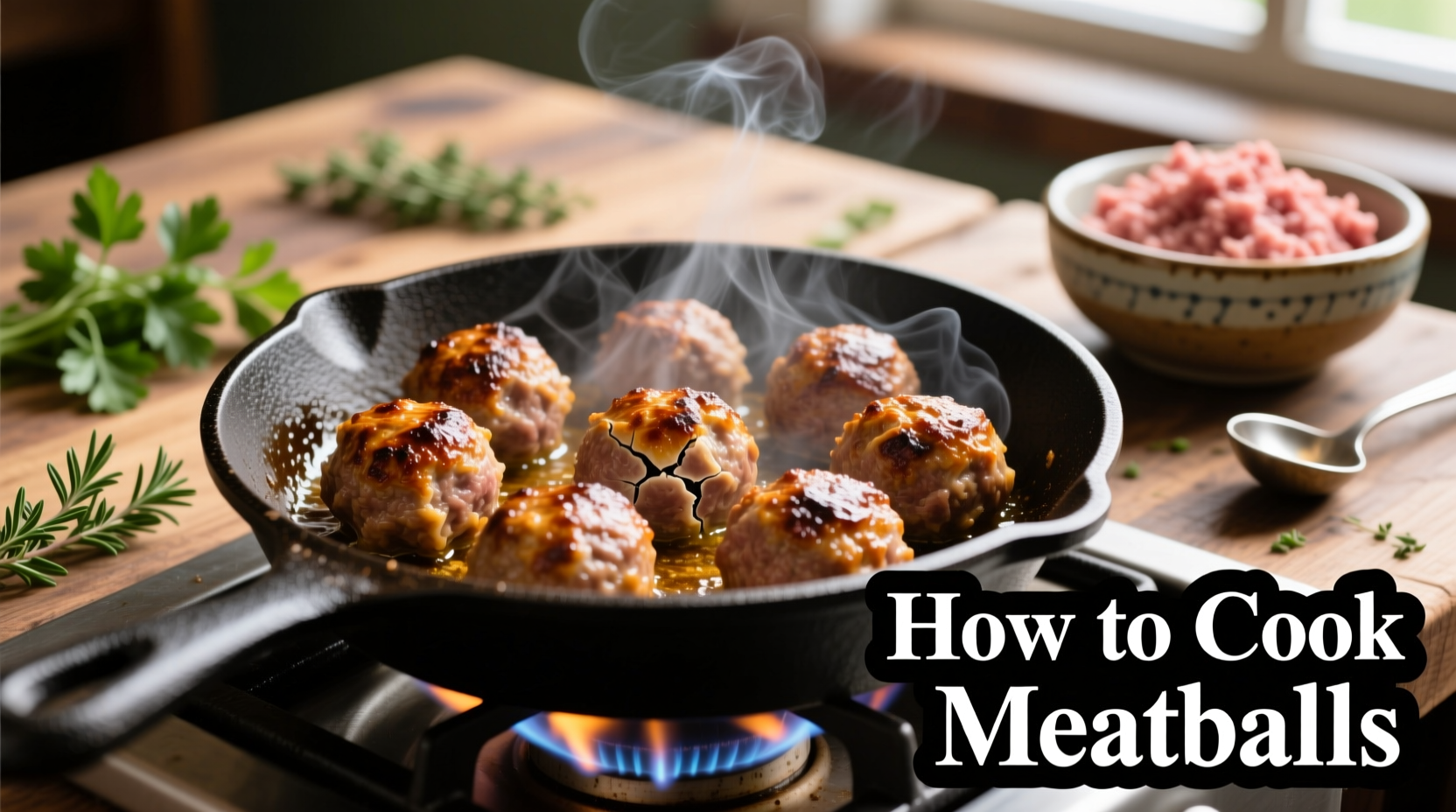Mastering meatball preparation transforms weeknight dinners into culinary triumphs. Whether you're crafting classic Italian Sunday gravy or Swedish meatball feasts, understanding the science behind texture and flavor development separates adequate from exceptional results. This comprehensive guide distills decades of professional kitchen experience into actionable steps for home cooks.
Essential Ingredients for Perfect Meatballs
The foundation of great meatballs lies in ingredient selection and balance. Professional chefs prioritize these components:
- Meat selection: A blend of 80% lean ground beef with 20% pork fat creates optimal moisture and flavor. For lighter options, combine ground turkey with 15% olive oil.
- Binding agents: Soaked breadcrumbs (½ cup per pound of meat) with milk prevent dryness while maintaining structure better than dry breadcrumbs alone.
- Flavor enhancers: Freshly grated Parmesan (¼ cup), minced garlic (2 cloves), and flat-leaf parsley (3 tablespoons) add depth without overwhelming.
- Moisture balance: One large egg per pound of meat provides binding without creating sponginess when properly incorporated.

Step-by-Step Meatball Preparation
Follow this professional technique for consistent results:
- Prep ingredients: Soak ½ cup breadcrumbs in ¼ cup milk for 10 minutes until absorbed. Combine with meat, egg, ¼ cup grated Parmesan, 2 minced garlic cloves, 1 teaspoon dried oregano, and ½ teaspoon black pepper.
- Mix gently: Use your fingertips to blend ingredients just until combined. Overmixing develops proteins that cause toughness. The mixture should feel slightly sticky but hold shape.
- Chill mixture: Refrigerate for 30 minutes to allow flavors to meld and prevent spreading during cooking.
- Form uniform balls: Use a #20 cookie scoop (1.5 ounces) for consistent 1.75-inch meatballs. Roll gently between palms without compressing.
- Cook properly: Arrange on parchment-lined baking sheet with 1-inch spacing. Bake at 400°F for 20-25 minutes until internal temperature reaches 160°F.
Cooking Method Comparison
| Cooking Method | Temperature/Time | Best For | Texture Result |
|---|---|---|---|
| Baking | 400°F for 20-25 min | Weeknight meals, large batches | Evenly cooked, slightly firmer exterior |
| Pan-frying | Medium-high heat for 8-10 min | Smaller batches, immediate sauce integration | Crisp exterior, juicy interior |
| Simmering in sauce | Gentle simmer for 20 min | Traditional Italian preparations | Tender throughout, infused with sauce flavors |
Contextual Cooking Recommendations
Professional kitchens adapt techniques based on specific requirements:
- For meal prep: Baking produces the most consistent results across large batches. The USDA Food Safety and Inspection Service confirms oven cooking reduces cross-contamination risks compared to pan-frying (fsis.usda.gov).
- For delicate sauces: Poaching raw meatballs directly in simmering tomato sauce creates integrated flavor but requires careful temperature control to prevent disintegration.
- For special diets: Gluten-free preparations benefit from adding 1 tablespoon chia seeds soaked in 3 tablespoons water as a binder alternative.
Troubleshooting Common Issues
Address these frequent meatball challenges with professional solutions:
- Falling apart: Excess moisture or insufficient binder causes structural failure. Solution: Use the breadcrumb-to-meat ratio of ¼ cup per pound and ensure mixture chills for 30 minutes before shaping.
- Dry texture: Overcooking or lean meat blends create dryness. Solution: Incorporate 2 tablespoons olive oil into the mixture and use an instant-read thermometer to verify 160°F internal temperature.
- Flavor imbalance: Raw garlic or herb bitterness ruins taste. Solution: Sauté garlic in olive oil before adding, and use dried herbs early in mixing while adding fresh herbs after cooking.
Cultural Variations Worth Mastering
Explore authentic regional adaptations:
- Italian-style: Combine equal parts beef, pork, and veal with pecorino Romano. Simmer in San Marzano tomato sauce for traditional Sunday gravy.
- Swedish meatballs: Use equal parts beef and pork with allspice and nutmeg. Serve with creamy gravy and lingonberry jam as documented in Sweden's National Culinary Archives.
- Polish kielbasa-style: Incorporate smoked paprika and marjoram into pork-based mixture, then pan-fry before finishing in broth.
Storage and Reheating Guidelines
Follow these food safety protocols from the USDA:
- Cool completely within 2 hours of cooking
- Refrigerate for up to 3-4 days in airtight container
- Freeze on parchment-lined tray before transferring to freezer bags for up to 3 months
- Reheat from frozen in simmering sauce for 15 minutes or oven at 350°F for 20 minutes
Frequently Asked Questions
Can I make meatballs without eggs?
Yes, substitute one egg with 2 tablespoons ground flaxseed mixed with 3 tablespoons water. For richer alternatives, use ¼ cup ricotta cheese or 3 tablespoons mayonnaise per pound of meat. These binders maintain structure while adding moisture.
Why do my meatballs shrink during cooking?
Shrinking occurs when proteins contract from overmixing or excessive compression during shaping. Prevent this by mixing ingredients just until combined and rolling meatballs gently without squeezing. The ideal meat-to-binder ratio (1:¼) also minimizes shrinkage.
What's the best way to brown meatballs before simmering?
Heat 2 tablespoons oil in cast-iron skillet over medium-high heat. Sear meatballs in batches without crowding, turning gently every 2 minutes until evenly browned (about 8 minutes total). This Maillard reaction creates complex flavors while maintaining interior moisture.
How can I make gluten-free meatballs that hold together?
Replace breadcrumbs with ⅓ cup cooked quinoa or almond flour per pound of meat. Add 1 tablespoon chia seeds soaked in 3 tablespoons water for additional binding. Ensure mixture chills for 45 minutes before shaping to maximize structural integrity.











 浙公网安备
33010002000092号
浙公网安备
33010002000092号 浙B2-20120091-4
浙B2-20120091-4